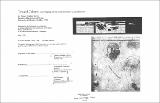| dc.contributor.advisor | Fernando P. Domeyko. | en_US |
| dc.contributor.author | Lavery, Ciaran Jonathan | en_US |
| dc.contributor.other | Massachusetts Institute of Technology. Department of Architecture. | en_US |
| dc.date.accessioned | 2013-05-29T19:48:53Z | |
| dc.date.available | 2013-05-29T19:48:53Z | |
| dc.date.copyright | 1991 | en_US |
| dc.date.issued | 1991 | en_US |
| dc.identifier.uri | http://hdl.handle.net/1721.1/79017 | |
| dc.description | Thesis (M. Arch.)--Massachusetts Institute of Technology, Dept. of Architecture, 1991. | en_US |
| dc.description | Includes bibliographical references (p. 76). | en_US |
| dc.description.abstract | This thesis is an investigation into physical constituents of civic architecture including some speculation on how civic architecture pertains to cultural awareness. The process of investigation is carried out through architectural exploration and definition of a site in the city of Boston. The site in question is experiencing a considerable degree of physical discontinuity between juxtaposed elements in the area. An overriding premise to the work is that a structured, organized identifiable urban environment is crucial to the creation of physical and social well being in any city. As Kevin Lynch so aptly comments: An ordered urban environment may serve as a broad frame of reference, an organizer of activity or belief or knowledge. Furthermore Lynch states: A vivid and integrated urban setting, capable of producing a sharp image, plays a social role as well. It can furnish the raw material for the symbols and collective memories of group communication. A striking landscape is the skeleton upon which many primitive races erect their socially important myths. It is with these premises that this thesis sets forth to establish and define elements necessary to intensify the civic content of the area under consideration. One objective of the work is to make new sense of the relation between existing elements through physical building up of the site. It is believed that by establishing places which bring together existing elements in the city, that continuity of environment may be promoted while allowing for the development and placement of new component types. In this manner a certain flexibility is accommodated within the goal of generating a sense of civic propriety through the physical built environment. The structure or use of the actual place under consideration is derived by integrating existing conditions in the area, (Northeastern University, Public gardens, residential neighborhoods and public movement systems), with the aim of generating place realized as a synthesis of all components. Through the auspices of such a place in conjunction with the energy generated by public passage an environment supporting various cultural activity, expression and thus awareness will be promoted. Another objective of the project is to use architectural definition in a matter that challenges the users way's of seeing, participating, experiencing and learning. | en_US |
| dc.description.statementofresponsibility | by Ciaran Jonathan Lavery. | en_US |
| dc.format.extent | 76 p. | en_US |
| dc.language.iso | eng | en_US |
| dc.publisher | Massachusetts Institute of Technology | en_US |
| dc.rights | M.I.T. theses are protected by
copyright. They may be viewed from this source for any purpose, but
reproduction or distribution in any format is prohibited without written
permission. See provided URL for inquiries about permission. | en_US |
| dc.rights.uri | http://dspace.mit.edu/handle/1721.1/7582 | en_US |
| dc.subject | Architecture. | en_US |
| dc.title | Toward culture : converging on the civic moment in architecture | en_US |
| dc.title.alternative | Converging on the civic moment in architecture | en_US |
| dc.type | Thesis | en_US |
| dc.description.degree | M.Arch. | en_US |
| dc.contributor.department | Massachusetts Institute of Technology. Department of Architecture | |
| dc.identifier.oclc | 24943010 | en_US |
